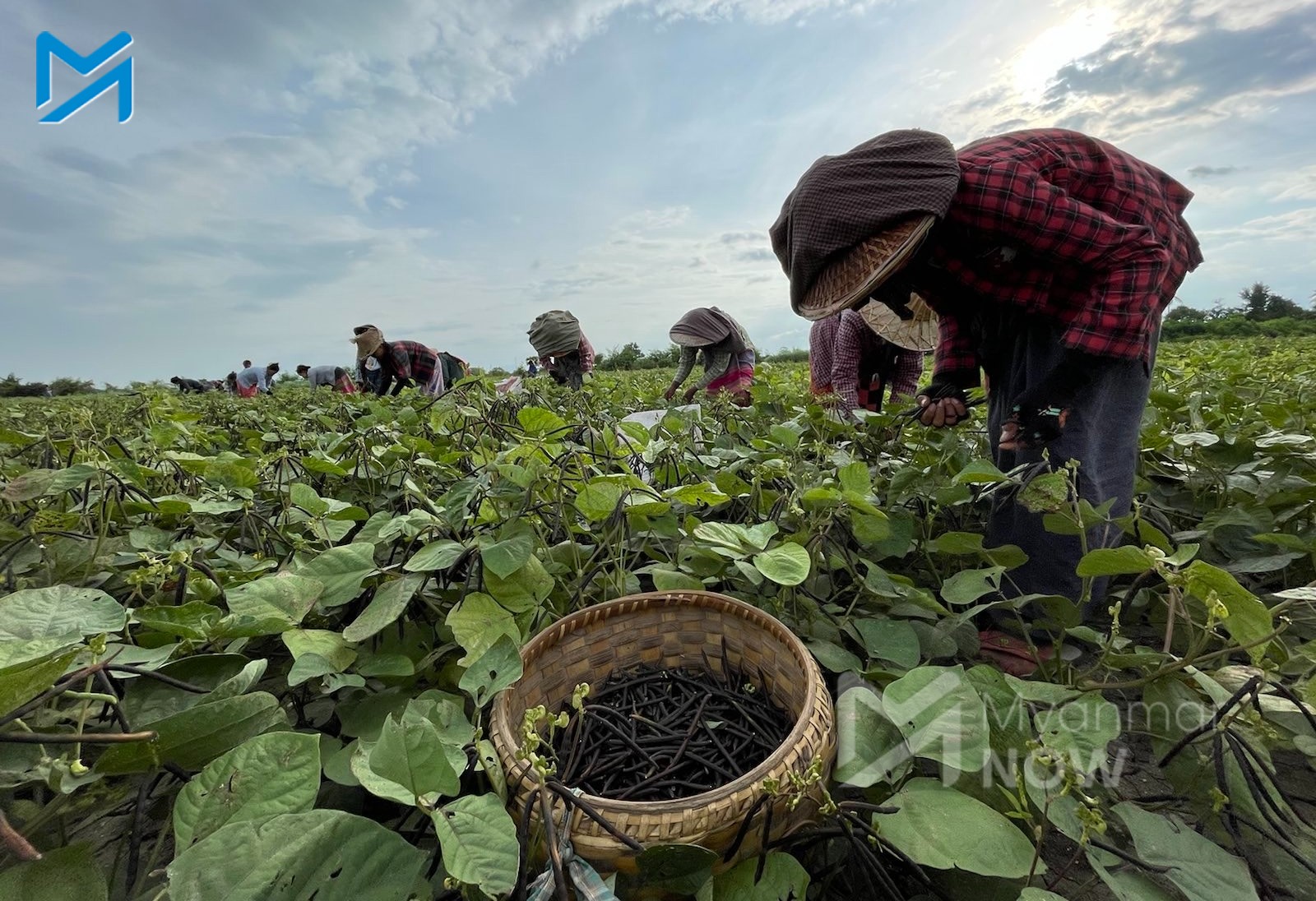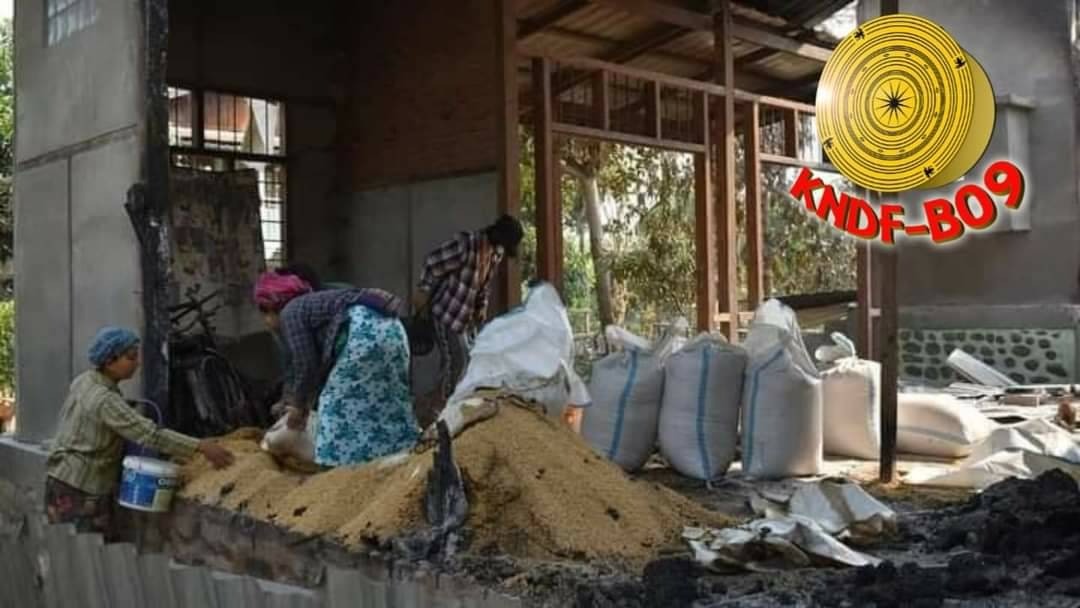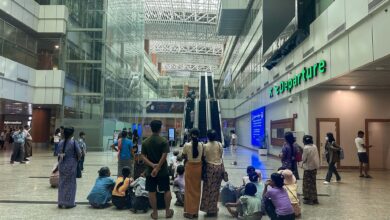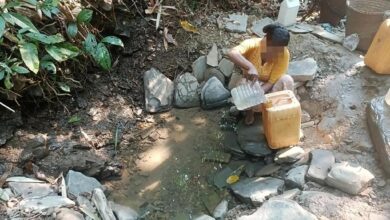
More than a year of military offensives have transformed much of the once fertile farmland of Sagaing Region into a near wasteland, villagers say.
Northwestern Myanmar, where Sagaing is located, has been a frontline in the nationwide anti-dictatorship movement that took hold following the February 2021 coup. The region has seen intense clashes between the military and resistance forces, as well as fierce raids on villages perpetrated by junta soldiers and its allied Pyu Saw Htee militia.
Thayetkone, a 200-household community in Khin-U Township, was targeted in one such attack on May 29 in which military personnel burnt down more than 70 homes and displaced its residents.
Saw Myint Lwin, who like most other villagers in Thayetkone made his living as a farmer, was among the locals who collectively left behind hundreds of acres of crops.
He told Myanmar Now that he lost his family’s rice stores and seeds, more than two acres of planted mung beans, and his new brick home. The house took more than three years to build, paid for with earnings from tending rented fields more than five times the size of Saw Myint Lwin’s own.
Construction of the building was completed just two weeks before the attack.
“I have nothing left. It is so sad, it makes me weep. All of the crops have dried up and the village is just an empty land,” he said. “It’s unreal.”

Communities in Sagaing have been hit particularly hard as the military continues a campaign of assaults on villages in an effort to crush public support for the armed resistance. According to monitoring group Data for Myanmar, 14,000 of the 20,000 homes burnt down nationwide by junta troops since the coup were in Sagaing.
Most of these residences were located in rural areas, where agriculture is integral to local livelihoods. Following Ayeyarwady and Bago regions, Sagaing is Myanmar’s third-largest producer of rice, and also boasts large harvests of beans, peanuts and sesame.
Htantaw village, in Sagaing’s Kantbalu Township, was raided in late May just three days before Thayetkone. Some 30 homes there were lost to arson, recalled a farmer who fled the attack and the 20 acres of land he had cultivated.
He told Myanmar Now that he was afraid to return to the area due to the presence of landmines planted by the occupying soldiers and the possibility that the troops could come back to strike again.
“Before the coup, at around this time of year, we would have already planted mung beans. Fields would have been ploughed and the seeds would have sprouted,” he explained. “Now, the land remains untilled.”
Lt Daung Min, the 38-year-old spokesperson of the Farmers Revolution Force—a guerrilla group in Sagaing’s Chaung-U Township—lamented that farmland had become battlefields, and paddies like those he once tended were no longer suitable for cultivation.
He said he had always imagined he would spend his life working the land, but joined the armed resistance after last year’s coup because he could not stand living under military rule.
“My mind is 100 percent focused on the revolution. We were already on the brink of death before joining the resistance—we couldn’t die for nothing,” he said. “We joined the revolution so that even if we die, it will be for a good cause.”
No longer able to grow their own food, Daung Min explained that guerrilla fighters rely on rice donated by villagers from areas where locals have not been displaced by junta raids. However, he noted that in these areas too, people feel there is a shortage of food.
“They help those who cannot farm, so they are not left with enough crops to sell. Most need help, and they share half of what they have,” he said.
A 25-year-old woman from Ywar Thit Gyi, on Sagaing’s border with Mandalay, said that villagers in her area remained in their homes but were fearful of being targeted in military arson attacks, or of being shot dead while tending their fields or herding cattle.
Soaring fuel prices, required to run equipment or water pumps required for irrigation, had also driven cultivation costs to unaffordable levels for many in the community, she added.
“We are in big trouble. Some families in our village are now starving,” she said, adding that some families in Ywar Thit Gyi had resorted to asking for food from a local monastery.
Selling their land and relocating was not an option, the woman said, explaining that the ongoing war had driven prices down and dissuaded the few potential buyers.

Rising costs and less harvest
The destruction of homes and forced abandonment of farmland has been accompanied by food insecurity increasingly felt nationwide.
The 16m acres of paddy cultivated nationwide over the last fiscal year signified a nine percent decrease compared to the same period prior to the coup, the World Bank stated in its recent economic report on Myanmar. The institution warned that more than one-fifth of the country’s population of 54m was facing threats to food access resulting from the combined increase in commodity prices and decrease in agricultural production.
However, an official from the Myanmar Rice Federation claimed that Myanmar’s food supply remained sufficient, even as fewer crops were being harvested due to the ongoing turmoil.
“There may be damage depending on the extent of exposure to armed conflict. Farmers cannot take care of their farms because they flee or run away since they are frightened. That leads to lower production,” he said.
“We have enough food for domestic consumption, but food prices have soared because of increased farming costs,” the official explained, referring to the price of fertiliser doubling in 2021, pesticides increasing by one-third, and rental pricing of farm equipment by one-quarter.
As a result, she noted that the cost of rice typically consumed by the public had risen up to 40 percent from 1,000 kyat (US$0.54) per bushel in 2020 to up to 1,400 kyat ($0.75) in 2021.
The official pointed out that even amid challenges in feeding its own population, Myanmar had continued to export 2m tons of rice annually, an amount worth more than $700m.
More than $1.5b was reportedly earned from the international sale of beans and pulses, as well—the price of which had increased and for which a large market remained, farmers noted.
Due to a domestic increase in the price of rice harvests from up to 600,000 kyat ($324) for 100 baskets prior to the coup to up to 1m kyat ($540) for the same amount last year, farmers in Ayeyarwady and Yangon regions—where clashes in rural areas have not been as widespread—said that they were struggling but still able to feed their families. (Editor’s note: One basket of rice in this context weighs approximately 46 lbs)
They noted, however, that in addition to the rising cost of agricultural supplies, there had also been a 50 percent increase in the price of paddy seed. They explained to Myanmar Now that they had in turn decreased cultivation costs by reducing the amount of fertiliser used and employing direct seeding methods, but had lower rice yields as a result.
A farmer in Ayeyarwady speculated that if the growing of crops became disrupted by military operations in his area and the surrounding regions to the extent that it has been in Sagaing, it would catapult the country into a greater crisis over access to and the supply of food.
In Yangon’s Hlegu Township, another area comparably spared from the severe battles occurring in the resistance strongholds to the north, one farmer still described a future under the junta as bleak and centred around day-to-day survival.
“If we continue like this, we can only hope to fill our stomachs and not fall into debt,” he explained. “I had hopes to buy gold, a tractor, to build a new house and to make donations after my crops were harvested. Now, all those hopes have faded away.”



